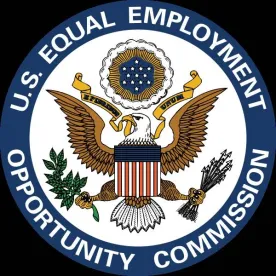During the final days of the Trump Administration in 2021, the Equal Employment Opportunity Commission (“EEOC”) published a final rule, which revised the EEOC’s conciliation process, and issued new guidance regarding religious discrimination, both of which will likely have a significant impact on the way employers will interface with the EEOC in the future.
EEOC Final Rule on Conciliation
Under Title VII, if the EEOC issues a reasonable cause finding against an employer on a discrimination charge, the agency is required to attempt to conciliate with the employer before filing litigation. Although the EEOC’s conciliation process was intended to streamline discovery and avoid litigation costs, employers frequently have found themselves at a disadvantage when attempting to resolve an allegation of an unlawful employment practice. Criticism of the EEOC’s conciliation practices by the defense bar often focused on perceptions by employers that the process lacked transparency. For instance, the EEOC typically did not provide detailed facts on which it relied for its reasonable cause finding; it rarely disclosed how it arrived at its demand for monetary relief; and it often refused to reveal the scope of the class of employees for whom it sought relief. These conciliation practices made it challenging for employers to appropriately assess the risks of litigation and to properly calculate the settlement value of the case. Further, conciliation practices have been inconsistent across EEOC field offices, leading to inconsistent conciliation outcomes.
The EEOC’s Final Rule represents the culmination of two six-month pilot programs initiated by the EEOC in July 2020 relating to its conciliation and mediation efforts. The Final Rule, published in the Federal Register on January 11, 2021, establishes minimum procedural requirements that the EEOC will follow during all of its conciliation efforts. Per the Final Rule, the EEOC will now provide all employers with the following:
(1) A written summary of the known facts and non-privileged information that the EEOC relied on in making its reasonable cause finding, including identifying known aggrieved individuals or groups of aggrieved individuals for whom relief is being sought (unless those individuals have requested anonymity), and the criteria the EEOC will use to determine additional aggrieved individuals;
(2) A summary of the EEOC’s legal basis for finding reasonable cause, including an explanation of how the law was applied to the case facts, as well as an explanation of how the EEOC was able to find reasonable cause despite information learned that caused the EEOC to doubt whether reasonable cause existed;
(3) The basis for any monetary or other relief sought, including calculations underlying the initial conciliation proposal;
(4) Notice of whether the EEOC has designated the case as a pattern or practice, systemic or class claim, and the basis for the designation; and
(5) At least 14 calendar days to respond to the initial conciliation proposal.
Given these improvements in the EEOC’s conciliation process, employers who receive a reasonable cause determination from the EEOC should find that participating in the EEOC’s conciliation process may increase the likelihood of their ability to effectively resolve the charge in a time- and cost-efficient manner, without going to court.
EEOC Manual Revisions regarding Religious Discrimination
On January 15, 2021, the EEOC approved revisions to its Compliance Manual Section on Religious Discrimination (“Manual Revisions”). The EEOC announced in doing so that it was replacing the previous 2008 version, which did not “reflect recent legal developments and emerging issues,” such as “several Supreme Court decisions, as well as … lower court [decisions], [which] have altered the legal landscape.” The Manual Revisions include updates to employee protections from religious discrimination in the context of reasonable accommodations and harassment and discuss defenses that may be available to religious employers. We provide two key areas of revision below:
Undue Hardship Analysis
Title VII requires employers to make reasonable accommodations for an employee’s sincerely held religious beliefs or practices so long as the accommodations do not pose an undue hardship to the employer. To determine undue hardship, the Manual Revisions suggest that employers consider such factors as the “identifiable cost in relation to the size and operating costs of the employer” and “the number of individuals who will in fact need a particular accommodation.” The Manual Revisions explain that courts “have found undue hardship where the accommodation diminishes efficiency in other jobs, infringes on other employees’ job rights or benefits, impairs workplace safety, or causes coworkers to carry the accommodated employee’s share of potentially hazardous or burdensome work.”
When deciding whether an accommodation would be reasonable, the Manual Revisions suggest that the employer engage in an interactive dialogue with the employee. This dialogue typically involves “mutually sharing information necessary to process the accommodation request.” The Manual Revisions explain that while failing to confer with the employee is not an independent violation of Title VII, “in some cases where an employer has made no effort to act on an accommodation request, courts have found that the employer lacked the evidence needed to meet its burden of proof to establish that the plaintiff’s proposed accommodation would actually have posed an undue hardship.”
The Ministerial Exception
The Manual Revisions emphasize, among other cases, the U.S. Supreme Court’s decision last year in Our Lady of Guadalupe School v. Morrissey-Berru, 591 U.S. ___ (2020), which expanded the ministerial exception created in Hosanna-Tabor Evangelical Lutheran Church & School v. EEOC, 565 U.S. 171 (2012). In Hosanna-Tabor, the Supreme Court held that federal discrimination laws cannot be applied to leaders of religious organizations. Eight years later, in Our Lady of Guadalupe School, the Supreme Court expanded its prior holding by establishing that a person serving an important religious function—even if not holding the title or training of a religious leader, such as a Catholic school teacher—satisfied the ministerial exception and was thus immune from an employment discrimination claim.
The Manual Revisions stress that the ministerial exception “should be resolved at the earliest possible stage before reaching the underlying discrimination claim” because it “is not just a legal defense that can be raised by religious institutions, but a constitutionally-based guarantee that obligates the government and the courts to refrain from interfering or entangling themselves with religion.”
While the EEOC’s Compliance Manual does not carry the force of law and does not constitute formal EEOC regulations, the EEOC’s commentary on existing law contained therein is instructive nonetheless. The Compliance Manual provides insight into the EEOC’s interpretation of court decisions, as well as the EEOC’s enforcement priorities, and it offers guidance for companies that face religious accommodation issues.



 />i
/>i

